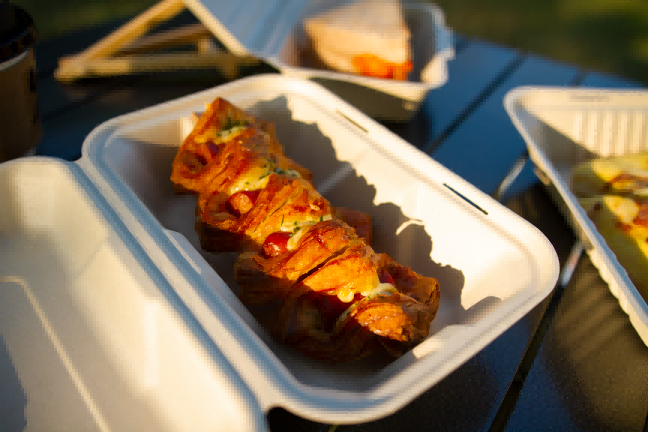As environmental awareness grows, more consumers and businesses are seeking eco-friendly alternatives, especially in the foodservice industry. Bagasse tableware, made from sugarcane fibers, is gaining popularity as an environmentally-friendly option. In this blog, we will explore the production process of bagasse tableware and highlight its significant benefits.

The production of bagasse tableware starts with the sugarcane processing. After extracting the juice from sugarcane, the remaining fiber, known as bagasse, is collected. This bagasse is then cleaned, dried, and processed into a pulp-like material, which is used to mold the tableware.
Eco-Friendly and Biodegradable: One of the biggest advantages of bagasse tableware is its biodegradability. Unlike traditional plastic or foam tableware, bagasse products decompose naturally, reducing environmental pollution.
Sustainable and Renewable: Sugarcane is a widely grown crop, and using bagasse as a raw material for tableware helps reduce reliance on non-renewable resources like wood and petroleum.
Non-Toxic and Safe: Bagasse tableware is free from harmful chemicals and meets food contact safety standards, making it an ideal choice for food packaging and tableware.
Heat and Oil Resistance: Bagasse tableware is highly resistant to heat and oils, making it suitable for hot foods and oily dishes without risk of deformation or leakage.
Durability: Despite being biodegradable, bagasse tableware offers moderate strength and can handle daily use without easily breaking or bending.
As consumers demand more sustainable options, bagasse tableware stands as a prime example of eco-friendly innovation. By using bagasse, a natural byproduct of sugarcane, we are not only minimizing waste but also contributing to the preservation of our planet. If you haven’t tried bagasse tableware yet, now is the perfect time to make the switch and support a greener future!